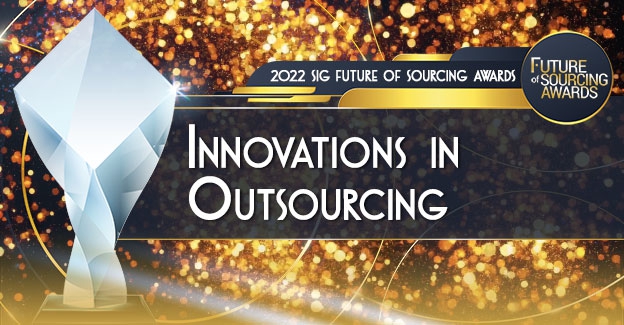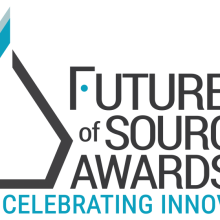Can you outline why your team embarked on this project and the problem that needed to be solved?
The pandemic and business downturn devastated the aerospace industry, shrinking annual revenue projections by 75%, which drove an imperative to radically rethink every aspect of work across the enterprise, including product and service offerings, sourcing models, make/buy determinations, on-and-offshoring mix, supply chain resiliency, and supplier stratification in the ecosystem. The Application Management as a Service (AMaaS) project was a vital component of IT’s Business Transformation Program. In this initiative, we were challenged to develop top-level strategies within 30 days, perform an end-to-end value chain analysis within 60 days, and create transformational change initiatives within 90 days, which could be reviewed and approved by executives.
Rather than just slashing costs, we used the crisis as an opportunity to redesign our application sustainment, enhancement, and modernization activities, sourcing strategy, and supplier ecosystem in order to optimize the service and reposition for future growth during the forthcoming economic recovery. This included improving organizational focus on strategic work while outsourcing application modernization and operations management, accelerating the adoption of an agile operating model, fast-tracking implementation of cutting-edge DevSecOps tools for automation, reducing technical debt, and moving from a suboptimal mix of staff augmentation, internal, and external resources to a fully managed service with improved SLAs and customer experience, all while achieving cost savings to reinvest in modernization and digital transformation. Success required supplier-driven innovation, so the solicitation was conducted using agile procurement with a collaborative RFS process.
How were things done originally and what was the inspiration to innovate the process?
There were approximately 2,500 applications, many tied to legacy technologies that needed to be modernized but lacked funding and skilled resources to implement due to the economic downturn. The “art of the possible” for supporting these applications was based on the nature of the data (e.g., global trade controls, global privacy restrictions, critical technical information, defense/classified data, etc.), which determined who can access, where it can be stored, and how it must be secured. Work was performed in a mix of traditional waterfall and scaled agile methodologies that varied by application portfolio, supported by a mix of internal and external resources, often in a staff augmentation model. There was no common enterprise service management process, work prioritization, or incident/problem management tool being utilized for all applications, and no centralized dashboard of internal/external supplier performance. Automation and innovation, where implemented, were often “stove-piped” by domain or supplier, driving up both infrastructure and application support complexity and costs.
What KPIs did you use to measure success for this project? (For example: performance, customer satisfaction, revenue, sales or relevant financial gains?)
Goals included:
- Review all applications across the enterprise and identify those best fit for outsourcing
- Leverage agile procurement via a collaborative RFS process to acquire supplier-driven innovation and contract for an outcome-based solution with the right-sized SLA
- Award AMaaS to two suppliers who will operate in a “champion-challenger” model and implement applications into the service in “waves” to minimize risk while achieving the best value through ongoing “friendly” competition
- Leverage a flexible and scalable commercial model to “pay by the drink” with rational risk-sharing to incentivize continuous adoption of best practices
- Realize significant cost savings and repurpose a portion of them to expedite modernization and transformation efforts
- Create a centralized Application Management Office (AMO) to standardize service delivery across the enterprise, provide an improved customer support model, expedite additional work to the AMaaS contracts where feasible, prioritize work, assure supplier performance, and remediate value leakage
- Develop enterprise visibility of all applications by implementing a common incident and problem management solution and key metrics dashboard across all application portfolios
All of these goals were achieved. Further, we reduced the time it took from solicitation release to contract award by approximately 60% and achieved cost savings of roughly 50%. We also achieved significant supplier-driven innovation through tools, processes, service standardization, and application modernization investments necessary for technical debt remediation and expedited internal/external cloud adoption, among other benefits. We have completed the first wave of application onboarding, and building on this success, we are preparing to onboard additional waves of applications.
How do you plan to ensure that the new model remains relevant and adapts to the future needs of the market?
While the Request for Solution (RFS) process has been emerging as an industry best practice for acquiring supplier-driven innovation, overlaying the agile procurement methodology and collaborative, simultaneous multi-supplier SOW/SLA negotiation has never been done before to the best of our knowledge. Where applicable (e.g., based on sourcing strategy, category considerations, and procurement plans), we intend to continue to leverage this innovation for future solicitations.
The creation of the new Application Management Office (AMO) will ensure that the AMaaS contracts and supplier performance will continuously meet our needs, with governance to measure and manage relationships, performance, operational execution, innovation investments, and technology modernization, including necessary coordination with other services and suppliers such as internal and external cloud (IaaS/PaaS) hosting providers. The contract has a base of four years, with three one-year options and a variety of governance and Terms & Conditions levers to allow for flexibility in rewarding good performance and, where needed, accommodating any unforeseen changes in service demand, global business environment, technology marketplace, economic conditions, emerging regulations, etc.
What advice do you have for those who may want to implement this innovative approach in their own organizations?
-
Build a strong sourcing team comprised of individuals with key technical and procurement subject matter expertise, who have diverse backgrounds and experience, and a “seat at the table” with executive leadership
-
Examine the art of the possible first and then consider feasibility of proposed solutions so that you don’t over-focus on what’s historically been done
-
Identify clear and measurable success criteria
-
Obtain executive sponsorship and stakeholder commitment to ensure creative solutions will be supported and implemented
-
Identify key change leaders to evangelize the initiative and keep momentum going from RFS to a steady state
-
Hold a joint bidder’s conference with your executive leadership attending/speaking to clearly articulate your unmet business needs, desire for (and willingness to accept) supplier-driven innovation, and demonstrate commitment to the project
-
Hold iterative 1:1 solutioning sessions with bidders to provide guide rails and ensure viability to their proposed solutions
-
Down-select to a manageable few finalists based on your success criteria
-
Collaborate with down-selected finalists to develop common SOW/SLAs, holding individual breakout sessions as needed to protect each bidder’s unique innovations and solutions
-
Award with a champion/challenger model to ensure “friendly” competition and maintain the gains
-
Institute a dedicated AMO team to build strong buyer/supplier relationships, drive disciplined governance, proactively resolve issues, and remediate value leakage
I'm sure your company has many different processes and projects they are outsourcing. Why did you choose to submit this specific project?
The success of this program demonstrates our team’s pioneering spirit, willingness to tackle tough challenges, and desire to embrace continuous improvement. We have enhanced our capabilities and responsiveness via the agile RFS procurement process and believe that it is a best practice that can and should be widely adopted across the industry in order to help our profession improve time to value with manageable risk. Consequently, we wanted to share this with those interested in learning from our experience.







